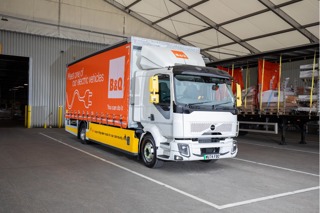UK delivery fleets are facing a shortage of 30,000 drivers that will negatively impact this year’s key peak period, according to new data.
Esendex, the retail communications business, has analysed data from Indeed to calculate the vacancy rate for the most common delivery job titles.
The report highlights over 11,000 open vacancies for ‘HGV’ drivers and 13,000 for ‘delivery driver’.
‘Picker packer’ roles also face a notable shortfall, with 5,000 positions unfilled, although vacancies for ‘logistics coordinators’ and ‘parcel sorters’ remain comparatively lower at 200 and 25 respectively.
The company’s Delivery Delays report shows a significant variation in delivery vacancies across regions and cities in the UK, indicating that some retailers may face a critical challenge in meeting rising consumer demand during this year’s Black Friday and Christmas period, which is expected to see a 5.6% increase in sales compared with last year.
Fleets start planning for “peak” almost 12 months in advance, so it’s an issue they will have been working to address for some time even before the end of 2023.
South West faces biggest shortage
Within England, the South West region faces the largest shortage, with 1,931 delivery vacancies in total and a vacancy rate of 33.8 per 100,000 residents.
This was closely followed by the East of England, with a rate of 33.5, suggesting a potentially higher rate of delivery delays within these regions.
Conversely, the North East of England had a much lower vacancy rate of 9.6, with just 256 vacancies in total, which could lead to a more stable delivery season.
At a city level, Bristol stands out as the city most at risk for delivery delays, with a staggering 98.0 vacancies per 100,000 residents. As a critical shortage in one of the UK’s key cultural hubs, the resulting disruption could widely impact local businesses and shoppers.
Peterborough and Southampton followed behind, with a rate of 86.9 and 75.2 vacancies per capita respectively, further indicating the vulnerability of these cities to potential delays this close to the holiday season.
Shoppers in Manchester can also expect to experience some delays to parcels. Although the third largest city in the UK, there were over 230 vacancies in total for delivery jobs, creating a delivery gap of 59.4 vacancies per 100,000 residents.
York, Oxford, and Leeds round out the top 10 cities most at risk.
As prominent destinations for Christmas shopping, the shortages in delivery jobs could result in heightened delivery delays, ultimately impacting customer satisfaction during a crucial retail period.
Chris Gorman, head of commercial transformation at Esendex, said: “As we see an increase in online demand in the Black Friday and Christmas shopping period, recognising the regions most at risk from delivery job shortages allows retail businesses and ecommerce brands to anticipate potential bottlenecks in the supply chain.
"With great numbers of vacancies for delivery drivers in England, especially in rural areas, fleet management operators will face pressures to get parcels delivered to customers when expected.
"One of the most effective ways for businesses to manage these challenges is through the use of real-time communication tools, such as automated SMS solutions and Whatsapp for Business. These tools enable businesses to keep customers informed about delivery progress and any unexpected delays, allowing for proactive customer engagement.
“During peak retail periods, maintaining transparency is even more crucial to customer satisfaction. By providing timely updates and facilitating two-way communication, businesses can alleviate customer service pressure and ensure greater customer confidence. During such a competitive trading period, responsiveness can be a key differentiator for businesses.”
Delivery job shortages across the UK
| Country | HGV driver vacancies | Delivery driver vacancies | Logistics coordinator vacancies | Picker packer vacancies | Parcel sorter vacancies | Total delivery job shortages (per 100,000) |
|---|---|---|---|---|---|---|
| England | 10,000 | 11,000 | 200 | 4,000 | 25 | 43.7 |
| Scotland | 400 | 700 | 17 | 200 | 13 | 24.2 |
| Northern Ireland | 100 | 100 | 7 | 100 | 8 | 16.4 |
| Wales | 200 | 200 | 8 | 100 | 2 | 16.1 |























Login to comment
Comments
No comments have been made yet.